AX INTEL ANALYSIS: Iran & Economic Fallout of C19
AX INTEL ANALYSIS: Iran & Economic Fallout of C19
DATE: 23APR
COVID-19’s impact on Iran, one of the early epicenters of the outbreak, has been particularly severe. With official figures (likely very under-reported when compared to the percentages coming from open societies) of nearly 75,000 confirmed cases and over 4,600 deaths, it is among the top 10 hardest hit countries. The outbreak is expected to peak around late May and researchers are worried that if the Iranian public and government do not adhere to significantly stricter quarantine and social distancing measures, COVID-19-related deaths could reach as high as 3.5 million or 4.3 percent of Iran’s total population.
Exacerbated by the effects of U.S. sanctions under the “maximum pressure” campaign, the economic fallout is likely to be wide-ranging and severe, hampering the government’s ability to effectively respond to the crisis.
Optimistic estimates put the impact in 2020 at around 15% of GDP, while others suggest it could be far worse, reaching as high as 30%. It is also likely to result in massive job losses, which if not addressed swiftly and effectively, could lead to political and social unrest in the near future.
EMPLOYMENT IMPACT
The Iranian labor market was already suffering from high unemployment rates before the pandemic, especially among college-educated youth. In the best-case scenario, the estimated economic contraction in 2020 will put 3-4 million jobs at risk, potentially pushing the actual (not official) unemployment rates from around 20 percent now to more than 35 percent in just few months.
Similar to the U.S. and Europe, small businesses, the transportation industry, hospitality, and the services sector in general — which employs more than half of all working Iranians — will get hit the hardest. The timing could not have been worse because Nowruz, the Persian new year that marks the first day of spring, is the most profitable period of the year for many of the country’s small businesses, retail stores, ground and air transportation, restaurants, and hotels.
Those working in the informal economy and daily wage earners, which make up nearly a quarter of the 24 million working Iranians, are likely to be the worst affected. With no fixed salaries, little to no savings, and inadequate coverage from formal insurance and social protection programs, these workers face the greatest risk of infection as they cannot afford to stop working and are fully dependent on their daily earnings.
Aware of this fact and worried that strict quarantine measures would immediately push an additional 20 percent of the population into extreme poverty, which could potentially brew more social unrest, the Iranian government has shied away from imposing stricter quarantine measures that epidemiologists recommend to slow down the rate of the virus’s spread. In other words, faced with the medium-run tradeoff between the economy and public health, the Iranian government seems to have chosen the economy. (This helps further explains the ludicrous claim by the IGRC about a C19 detection device - an effort to stave off popular revolt by duping the masses into thinking everything is under control).
THE GOVERNMENT’S RESPONSE
However, no matter the government’s policies regarding the quarantine, the 3-4 million job losses associated with a sudden and deep economic contraction in 2020 seem to be inevitable. As a result, the government is scrambling to offer loans to the 23 million households already receiving monthly cash transfer subsidies, known as Yaraneh. However, given the minuscule size of these loans — less than $65 or equivalent to the monthly income needed for a family of two in Iran to remain just above the extreme poverty line — the effectiveness of such measures in reducing the economic impact of COVID-19 is highly questionable. Initially, these loans were to be extended with a 12 percent interest rate, but realizing the political risks associated with such a move, the government later decided to make them interest-free.
Given the dire state of affairs, these small gestures are unlikely to address the Iranian public’s profound dissatisfaction with how the government has managed both the economy and the pandemic. The COVID-19-related economic downturn in 2020 will only add to the already high levels of frustration, especially among the two tails of the labor force: university-educated youth and unskilled workers.
The vast majority of the expected 3-4 million jobs losses will take place in the informal economy, where most of the unskilled labor is concentrated. Moreover, with three consecutive years of economic contractions (in 2018, 2019, and 2020), the Iranian economy has little to no capacity to create the white-collar jobs needed to absorb millions of young university graduates — graduates who were already facing unemployment rates upwards of 30 percent even before the pandemic. The economic collapse resulting from COVID-19 will likely only add to the deep frustrations of these two groups of Iranians, who don’t have much to lose and have little to hope for in term of economic aspirations.
If not addressed immediately and effectively, widespread job losses and the subsequent harsher labor market conditions could potentially lead to more political instability and social unrest. This is especially true following the violent unrest in November 2019 over gasoline price hikes, the public outrage over the accidental downing of the Ukrainian passenger airliner in January 2020, and the rapidly declining popularity of President Hassan Rouhani’s government in his second term.
The Iranian government now faces one of the worst crises — if not the worst — since the 1979 revolution, and there is very little it can do to address the economic fallout. More than 20 percent of the population was already under the extreme poverty line even before the pandemic and the government’s straitened finances mean it has very little capacity to expand social welfare programs to address the economic hardships facing millions of families.
COUNTER-BALANCING EFFECTS
Potentially counterbalancing these developments, however, is the global nature of the COVID-19 crisis. Economies around the world have been severely affected by the pandemic — the U.S. alone lost more than 17 million jobs in just three weeks. It is also impossible to ignore the central role of U.S. sanctions in the recent faltering of Iran’s economy and its capacity to fight the disease. Imposing additional sanctions on Iran and pressuring the IMF to reject Tehran’s request for an emergency loan of $5 billion are the latest moves by the Trump administration as it seeks to choke the Iranian economy at a time when the country and the world are hit hard by the pandemic. Against this backdrop, the Iranian public may actually show more empathy and solidarity with their government. If history provides any guide, Iranians tend to unite during times of exogenous shocks and crises, especially if such crises are exacerbated and exploited by hostile outside forces.
This may explain why despite the growing unpopularity of Rouhani’s government, its widespread mismanagement of the economy and the pandemic, and the resulting economic and public health crises, there is as yet no sign of social unrest. On the contrary, if anything, there seems to be an increasing sense of unity and empathy among the public, at least for now. How long this will last is uncertain, but one thing is clear: How the Iranian government responds in the weeks and months ahead to what may well be its biggest challenge yet is likely to have a deep impact on Iran’s economy and society for years to come.
DATE: 23APR
COVID-19’s impact on Iran, one of the early epicenters of the outbreak, has been particularly severe. With official figures (likely very under-reported when compared to the percentages coming from open societies) of nearly 75,000 confirmed cases and over 4,600 deaths, it is among the top 10 hardest hit countries. The outbreak is expected to peak around late May and researchers are worried that if the Iranian public and government do not adhere to significantly stricter quarantine and social distancing measures, COVID-19-related deaths could reach as high as 3.5 million or 4.3 percent of Iran’s total population.
Exacerbated by the effects of U.S. sanctions under the “maximum pressure” campaign, the economic fallout is likely to be wide-ranging and severe, hampering the government’s ability to effectively respond to the crisis.
Optimistic estimates put the impact in 2020 at around 15% of GDP, while others suggest it could be far worse, reaching as high as 30%. It is also likely to result in massive job losses, which if not addressed swiftly and effectively, could lead to political and social unrest in the near future.
EMPLOYMENT IMPACT
The Iranian labor market was already suffering from high unemployment rates before the pandemic, especially among college-educated youth. In the best-case scenario, the estimated economic contraction in 2020 will put 3-4 million jobs at risk, potentially pushing the actual (not official) unemployment rates from around 20 percent now to more than 35 percent in just few months.
Similar to the U.S. and Europe, small businesses, the transportation industry, hospitality, and the services sector in general — which employs more than half of all working Iranians — will get hit the hardest. The timing could not have been worse because Nowruz, the Persian new year that marks the first day of spring, is the most profitable period of the year for many of the country’s small businesses, retail stores, ground and air transportation, restaurants, and hotels.
Those working in the informal economy and daily wage earners, which make up nearly a quarter of the 24 million working Iranians, are likely to be the worst affected. With no fixed salaries, little to no savings, and inadequate coverage from formal insurance and social protection programs, these workers face the greatest risk of infection as they cannot afford to stop working and are fully dependent on their daily earnings.
Aware of this fact and worried that strict quarantine measures would immediately push an additional 20 percent of the population into extreme poverty, which could potentially brew more social unrest, the Iranian government has shied away from imposing stricter quarantine measures that epidemiologists recommend to slow down the rate of the virus’s spread. In other words, faced with the medium-run tradeoff between the economy and public health, the Iranian government seems to have chosen the economy. (This helps further explains the ludicrous claim by the IGRC about a C19 detection device - an effort to stave off popular revolt by duping the masses into thinking everything is under control).
THE GOVERNMENT’S RESPONSE
However, no matter the government’s policies regarding the quarantine, the 3-4 million job losses associated with a sudden and deep economic contraction in 2020 seem to be inevitable. As a result, the government is scrambling to offer loans to the 23 million households already receiving monthly cash transfer subsidies, known as Yaraneh. However, given the minuscule size of these loans — less than $65 or equivalent to the monthly income needed for a family of two in Iran to remain just above the extreme poverty line — the effectiveness of such measures in reducing the economic impact of COVID-19 is highly questionable. Initially, these loans were to be extended with a 12 percent interest rate, but realizing the political risks associated with such a move, the government later decided to make them interest-free.
Given the dire state of affairs, these small gestures are unlikely to address the Iranian public’s profound dissatisfaction with how the government has managed both the economy and the pandemic. The COVID-19-related economic downturn in 2020 will only add to the already high levels of frustration, especially among the two tails of the labor force: university-educated youth and unskilled workers.
The vast majority of the expected 3-4 million jobs losses will take place in the informal economy, where most of the unskilled labor is concentrated. Moreover, with three consecutive years of economic contractions (in 2018, 2019, and 2020), the Iranian economy has little to no capacity to create the white-collar jobs needed to absorb millions of young university graduates — graduates who were already facing unemployment rates upwards of 30 percent even before the pandemic. The economic collapse resulting from COVID-19 will likely only add to the deep frustrations of these two groups of Iranians, who don’t have much to lose and have little to hope for in term of economic aspirations.
If not addressed immediately and effectively, widespread job losses and the subsequent harsher labor market conditions could potentially lead to more political instability and social unrest. This is especially true following the violent unrest in November 2019 over gasoline price hikes, the public outrage over the accidental downing of the Ukrainian passenger airliner in January 2020, and the rapidly declining popularity of President Hassan Rouhani’s government in his second term.
The Iranian government now faces one of the worst crises — if not the worst — since the 1979 revolution, and there is very little it can do to address the economic fallout. More than 20 percent of the population was already under the extreme poverty line even before the pandemic and the government’s straitened finances mean it has very little capacity to expand social welfare programs to address the economic hardships facing millions of families.
COUNTER-BALANCING EFFECTS
Potentially counterbalancing these developments, however, is the global nature of the COVID-19 crisis. Economies around the world have been severely affected by the pandemic — the U.S. alone lost more than 17 million jobs in just three weeks. It is also impossible to ignore the central role of U.S. sanctions in the recent faltering of Iran’s economy and its capacity to fight the disease. Imposing additional sanctions on Iran and pressuring the IMF to reject Tehran’s request for an emergency loan of $5 billion are the latest moves by the Trump administration as it seeks to choke the Iranian economy at a time when the country and the world are hit hard by the pandemic. Against this backdrop, the Iranian public may actually show more empathy and solidarity with their government. If history provides any guide, Iranians tend to unite during times of exogenous shocks and crises, especially if such crises are exacerbated and exploited by hostile outside forces.
This may explain why despite the growing unpopularity of Rouhani’s government, its widespread mismanagement of the economy and the pandemic, and the resulting economic and public health crises, there is as yet no sign of social unrest. On the contrary, if anything, there seems to be an increasing sense of unity and empathy among the public, at least for now. How long this will last is uncertain, but one thing is clear: How the Iranian government responds in the weeks and months ahead to what may well be its biggest challenge yet is likely to have a deep impact on Iran’s economy and society for years to come.
AX INTEL ANALYSIS: ISIS operational-tempo increasing in Syrian desert
23/04/20 08:22 Filed in: ISIS | intelligence
AX INTEL ANALYSIS: ISIS operational-tempo increasing in Syrian desert
DATE: 22APR // 0825EDT
Though ISIS’s territorial state was destroyed a year ago, the terrorist group continues to exist in the shadows and ungoverned spaces, presenting an ongoing insurgent threat across multiple areas of Syria and Iraq. Nowhere is that more clearly the case than in Syria’s central desert, which is controlled, at least on paper, by the Syrian regime and allied Iranian and Russian-backed militias. It is in this expansive desert region known as the “Badia” that ISIS enjoys invaluable strategic depth — utilizing the desert itself as well as an array of cave complexes to hide out and from which to set up fake checkpoints, launch ambushes and raids, and carry out assassinations, IED attacks, and kidnappings… Read More...
DATE: 22APR // 0825EDT
Though ISIS’s territorial state was destroyed a year ago, the terrorist group continues to exist in the shadows and ungoverned spaces, presenting an ongoing insurgent threat across multiple areas of Syria and Iraq. Nowhere is that more clearly the case than in Syria’s central desert, which is controlled, at least on paper, by the Syrian regime and allied Iranian and Russian-backed militias. It is in this expansive desert region known as the “Badia” that ISIS enjoys invaluable strategic depth — utilizing the desert itself as well as an array of cave complexes to hide out and from which to set up fake checkpoints, launch ambushes and raids, and carry out assassinations, IED attacks, and kidnappings… Read More...
AX INTEL ANALYSIS: C19, oil and redesigning the Middle East
23/04/20 08:15 Filed in: covid-19 | intelligence
AX INTEL ANALYSIS: C19, oil and redesigning the Middle East
DATE: 22APR // 2245GMT
The Middle East is facing an unexpected turning point. The region will not look the same after COVID-19 as it did before it. Prior to the outbreak, the Middle East had managed to normalize the geostrategic implications of the Arab Spring. Tunisia transitioned to a fully functioning democracy, Egypt ended up with a strongman, Syria became a catastrophe, Jordan and Morocco enacted some reforms, while Algeria and Sudan are still struggling with transitions and Lebanon stands on the brink of economic collapse… Read More...
DATE: 22APR // 2245GMT
The Middle East is facing an unexpected turning point. The region will not look the same after COVID-19 as it did before it. Prior to the outbreak, the Middle East had managed to normalize the geostrategic implications of the Arab Spring. Tunisia transitioned to a fully functioning democracy, Egypt ended up with a strongman, Syria became a catastrophe, Jordan and Morocco enacted some reforms, while Algeria and Sudan are still struggling with transitions and Lebanon stands on the brink of economic collapse… Read More...
AX INTEL BULLETIN: COVID-19 Impact on Near East
23/04/20 08:04 Filed in: covid-19
AX C19 BULLETIN: Impact on the Middle East
DATE: 23APR2020 // 1308GMT
The coronavirus crisis in the Middle East is in its early stages, and looks set to have devastating humanitarian and economic costs. Deaths could rise into the millions, and economic contraction could be in the double digits. The pandemic risks pushing more precarious countries toward collapse, exacerbating civil wars, generating more refugees and internally displaced persons (IDPs), and escalating regional conflict… Read More...
DATE: 23APR2020 // 1308GMT
- Worldwide Confirmed 2,639,243
- Recovered 715,734
- Deaths 183,820
The coronavirus crisis in the Middle East is in its early stages, and looks set to have devastating humanitarian and economic costs. Deaths could rise into the millions, and economic contraction could be in the double digits. The pandemic risks pushing more precarious countries toward collapse, exacerbating civil wars, generating more refugees and internally displaced persons (IDPs), and escalating regional conflict… Read More...
Ukraine intel sharing w/UK intel info on new Russian tactics
A delegation of Ukrainian military officials, with considerable experience in studying Russia’s war tactics in Donbass and Crimea, secretly visited the United Kingdom in July for consultations. The visit was part of a series of meetings between Ukrainian and British officials. Read More...
How ISIL tested European security and intel services
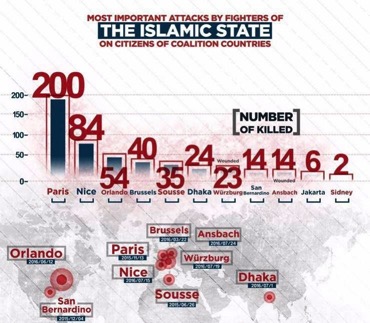
The case of Muhammad Dalil serve as an object lesson, from which Europe’s counter-terrorism agencies could learn from this and other past experiences of this kind what not to do and the high importance of tightening operational intelligence and discipline in their ranks.
Read More...
ISIL attacks catch Germany off guard

Germany stands out as refusing to admit to a reign of terror, partly because of the fallout generated for Chancellor Angela Merkel’s open-door policy for masses of distressed refugees.
But the damage is not just political. German authorities recently admitted that while accepting a million refugees, 130,000 failed to register at the special reception centers and have dropped out of sight. Read More...
Iran - Nuclear by end of 2017
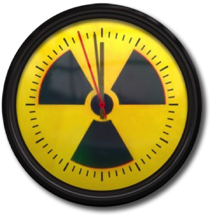
If Tehran decides to violate the accord Iran retains the capability to achieve this goal in months — not years. Read More...
Russia warned Turks of coup

Russian military intelligence in the northern Syrian province of Latakia, a few miles south of the Turkish border intercepted a series of encoded radio messages exchanged between Turkish commanders in the early hours of July 15 and pass this information to Turkish intelligence. Read More...
Russian SVR HQ (old KGB) doubles in size
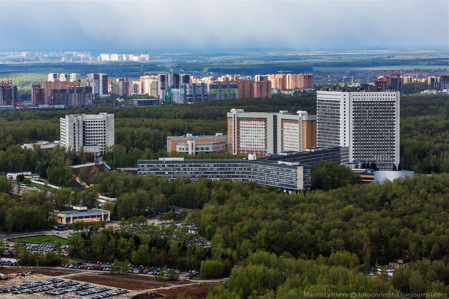
These additions appear to have increased the SVR headquarters’ floor space by a factor of two or more. Moreover, the nearby parking capacity at the complex appears to have quadrupled. There is no information available about what may have prompted the sudden building expansion at the SVR complex, nor whether it reflects drastic changes in the organizational structure, budget or mission of the agency. Read More...
Donald Trump Outlines America 1st Policy

With an impressive group of foreign policy advisors led by Alabama Senator Jeff Sessions and including Dr. Walid Phares and former Lt. Gen. Keith Kellogg, Mr. Trump called for a strengthened military and economy in order to lead the country into “an American-first” policy, while indicting President Obama for weakening the nation’s image around the world. Read More...
Spotting Concealed Weapons

Whether you work in law enforcement, security or just want to be aware of those around you who might be armed, these basic indicators can help you spot those armed and provide tips on better ways to carry your own weapon. The way the person moves, adjusts themselves, walks, sits, reaches, or even stands can all inadvertently draw attention to the fact they - or you - are carrying.
Read More...
Elicitation techniques - using the funnel.
24/07/15 09:43 Filed in: training | intelligence

Eliciting information from anyone who is uncooperative is a difficult task and you have to prepare for it. Just making up a list of questions does not constitute an interview. Much like peeking an onion, interrogators should engage in a systematic uncovering of information by gradually narrowing the focus with questions that elicit more specify responses. This article will look at the funnel approach to elicitation using closed and open-ended questions.
Read More...
LandNav - Why know your pace?
18/06/15 16:10 Filed in: navigation

While pace counting is admittedly an arcane distance determination technique that is seldom used by trail-bound hikers, it is an essential technique used by advanced-level land navigators who travel cross-country through challenging wilderness. In certain situations, a map and compass alone just aren't enough. Read More...
That killer waistline!

No, this isn’t about working out or losing weight - although if that’s a problem for you, then you should consider a fitness program. This is about surviving a gunfight. Read More...
Muslim Brotherhood and Hitler?

The media says that terrorists like the Muslim Brotherhood are really just poor folks oppressed, trying to gain freedom while the area’s real religious minority—the Jews—are painted as the bad guys, the oppressors. But did you know the MB founder was a Hitler fan? Read More...
Shoot 'em in the face...'til they stop.
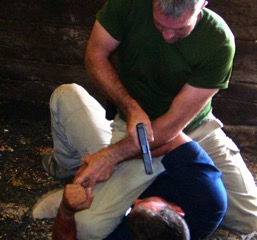
You shoot someone to stop him or her from doing something harmful toward you, your teammate or an innocent bystander. What’s your goal? To stop their actions as quickly as possible. Shooting someone in the torso—even a heart shot—simply means that you’re bleeding him to death. So what are your options? Read More...
Iran helping Syria?
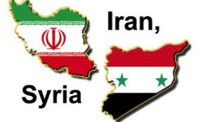
A relationship between Shiite-led Iran and predominantly Sunni Syria might appear unlikely, but its real - these two (apparently) opposing sects are working together. Read More...
Instructor development - debunking the myths

What is a failure drill? Something designed to makeup for a failed tactic or technique. Why do we do this? What’s the situation? What’s the distance? Let’s debunk some common shooting myths. Read More...
Shiite vs Sunni? Who's the bad guy?
12/05/15 16:17 Filed in: geopolitics

Let no one misunderstand - the war we currently fight is against radical, militant islam. Our government won’t admit that at the executive level, but that doesn’t change the facts on the ground. Read More...